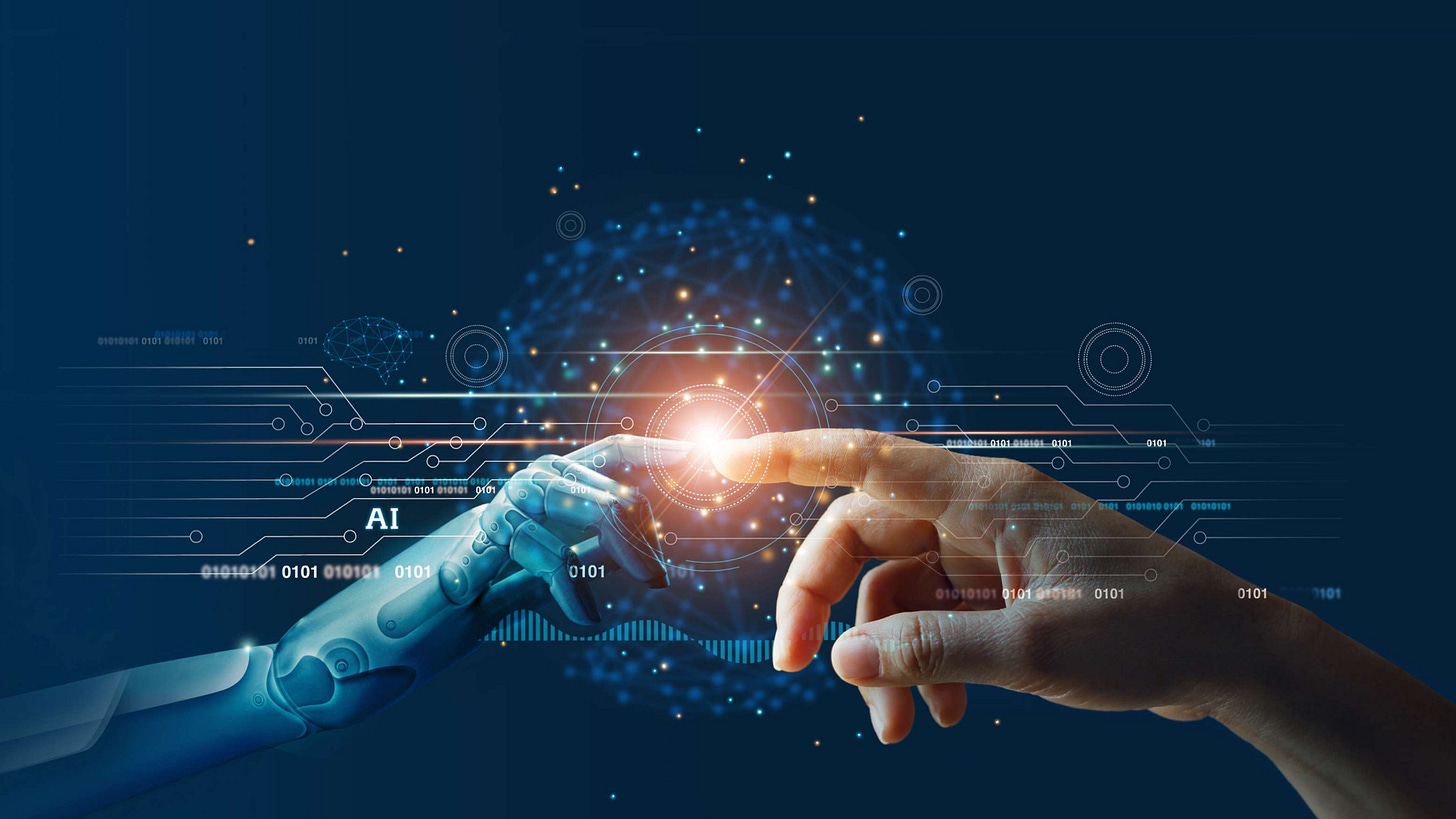Beyond Hype: How AI is Quietly Solving the World’s Biggest Bottlenecks
Most AI discussions focus on automation. But, true revolution lies in augmentation—that bridges knowledge gaps, fundamentally expands who can do what, and multiplies human capacity and accessibility.
The Forgotten Model of Distributed Expertise
I grew up in a city that was, for the most part, privately managed—a private organization handled the day-to-day operations. In our neighbourhood, we had what we called a 'Dispensary,' a community clinic somewhat similar to Delhi's 'Mohalla Clinics' today.
For daily ailments, pretty much 100% of the locality simply walked to the dispensary for first-level medical care.
As kids, if we bruised our knees while playing, we went to the Dispensary for primary dressing. If someone in the family got a fever, cough, cold, or anything else—the first stop was this community clinic. If the nurses or registered medical practitioners (RMPs) felt we needed specialized care, they would either refer us to the hospital for emergencies or ask us to return during a doctor's scheduled visit.
This simple system solved two fundamental problems:
Accessibility — It made primary care easily accessible for most people, just a stone's throw away
Capacity — It ensured that specialized doctors and hospitals weren't stretched beyond their limits
The key insight? Through proper training and enablement, nurses and RMPs could do more than their inherent skills might have initially allowed. They could assess symptoms, perform preliminary diagnosis, and determine whether specialized care was needed. This decentralized model brought healthcare to community doorsteps.
Over time, this model fell apart. Well-trained nurses and RMPs became a specialized skill, and they could only do so much alongside the administrative burden they carried.
The Global Capacity & Accessibility Crisis: A Tale of Nikhil
In Silchar, India—Nikhil1, a local driver, has become an unexpected yet critical figure in healthcare navigation. People from remote areas, unfamiliar with the medical system, seek him out when they arrive in the city. His role? Not as a doctor, but as a guide through the maze of healthcare.
A long queue forms beside his car. A young woman clutching medical papers, an elderly man with his son, a couple from a neighbouring state—all waiting for his help.
A man from Tripura approaches, having travelled 200 kilometres after being told he had jaundice. Nikhil listens, examines his documents, and organizes his appointments. But he notices something—these symptoms don't quite match jaundice. He arranges further tests, but a delay arises: the CT scanner at the diagnostic centre is broken, and the replacement part will take three days to arrive.
The man is distraught. Every extra day in Silchar means lost income—his shop is closed back home. Eventually, the tests confirm a tumour, not jaundice. Now, he must decide: seek treatment or return home to earn a living? He chooses the latter.
Nikhil never diagnoses—he simply helps patients navigate. His experience lets him identify patterns, but his ability is limited by access to information and resources.
This isn't just Nikhil's story. This is the story of global healthcare capacity in crisis.
The Faces of a Global Crisis
This capacity and accessibility crisis manifests differently around the world.
Healthcare: The Burden of Impossible Caseloads
In rural Minnesota, Dr. Sarah Halloway carries a burden meant for three physicians. With over 4,200 patients under her care—nearly double the recommended panel size—she rushes through abbreviated visits, knowing she's missing crucial details.
Some nights Dr. Halloway reviews charts until midnight. She’s terrified that she may have overlooked something serious because she only had minutes with that patient.
Dr. Halloway's experience isn't an anomaly. The Health Resources and Services Administration reports that over 80 million Americans live in areas with insufficient primary care, creating impossible workloads for those who remain.2
Education: When Personal Attention Becomes Impossible
In Stockholm, Maria Lindberg, a specialized mathematics teacher, faces her own version of this crisis. Responsible for 340 high school students across two schools, she can only provide meaningful feedback to a fraction of them.
She believes that Math isn’t a multiple choice—students need guided thinking. But, she feels helpless as she just has minutes per student each week, not enough to do that.
Sweden's National Agency for Education confirms Maria's reality isn't unique, with specialized teacher shortages growing most acute in STEM subjects, where conceptual understanding requires personalized instruction.3
Justice: When Backlogs Deny Rights
In Nairobi, shelves in the courtroom of Justice Benjamin Ochieng are lined with case files stacked to the ceiling.
Each file represents someone waiting for justice. Some have waited years. Justice Ochieng works fourteen-hour days, six days a week, and still the backlog grows.
Kenya's Judiciary reports that some court stations face over 7,000 cases per judge, with average case pendency stretching to 3-5 years—effectively denying timely justice to thousands.4
The global capacity crisis isn't about inefficiency—it's about the fundamental limits of human bandwidth in critical roles.
The Augmentation Revolution
Now imagine a different world.
Healthcare Reimagined Through Augmentation
Nikhil, our driver turned healthcare navigator, with an AI-powered app on his phone. As he listens to symptoms, the app prompts key questions he might not think to ask. It suggests potential diagnoses with probability scores, helping him prioritize which patients need immediate specialist attention. It estimates costs for different treatment pathways, helping patients make informed decisions about their care and finances.
Nikhil isn't replaced—he's augmented. His human empathy, local knowledge, and trusted position in the community remain irreplaceable. But now his impact is multiplied.
More Nikhil’s can use this system to now support more distraught patients and make quality healthcare more accessible.
In Minnesota, Dr. Halloway uses an AI system that pre-reviews patient records before appointments, flagging concerning patterns and suggesting targeted questions. During visits, it transcribes conversations, updates charts automatically, and generates personalized care plans for routine conditions—leaving her more time to focus on complex cases that truly need her expertise.
Dr. Halloway would finally practice medicine the way she was trained to, catching things she would have missed before.
Education Enhanced Through Personalization
In Stockholm, Maria's students interact with an AI tutor that provides immediate feedback on mathematical problems, explaining concepts in multiple ways and adapting to each student's learning style. Maria now spends her time working with students on advanced applications and creative problem-solving, while monitoring the AI's performance to ensure quality.
The AI handles the first rounds of explanation and practice. Maria steps in for the deeper conceptual work and motivation. Together, they reach every student, not just the loudest or most persistent ones.
Justice Accelerated Through Intelligence
In Nairobi, Justice Ochieng uses an AI system that drafts standard procedural rulings, organizes case files based on precedent and complexity, and even helps unrepresented litigants prepare proper submissions. He still makes every judicial decision, but now he can process three times the cases with greater thoroughness.
The law requires judgment, not just processing. Now he can focus on judgment while the AI handles the processing. Justice is becoming more accessible, not less human.
Real Augmentation, Not Transactional Automation
Consider the case of Makenzie Gilkison, a student with dyslexia who struggled to keep up with her peers due to reading difficulties. With AI-powered assistive technologies, Makenzie experienced a transformative change in her educational journey5. Tools such as AI-driven text-to-speech applications and interactive chatbots provided personalized support, enabling her to engage with learning materials more effectively and at her own pace.
Beyond individual cases, AI is transforming entire systems:
In Rwanda, the Ministry of Health has deployed an AI-supported community health worker program that has dramatically reduced unnecessary referrals. These workers—most with just basic training—can now correctly identify and manage common conditions while knowing when specialist intervention is truly needed. The program has shown a 23% reduction in infant mortality in participating districts.6
In Brazil, the National Council of Justice has implemented AI-powered legal assistance tools to address the country's massive case backlog. The system enables junior legal staff to prepare case summaries and draft routine motions, allowing judges to focus on core legal reasoning and decision-making. Early implementations have shown a 52% reduction in processing time for routine cases.7
In the Philippines, the Department of Education's "AI Teaching Assistant" pilot program equips teaching assistants in remote areas with AI tools for lesson planning, student assessment, and personalized learning pathways. Regions using the system have reported significant improvements in both literacy and numeracy scores among previously underserved populations.8
These examples represent real augmentation—not just automation of discrete tasks, but enhancement of human capability. The difference is profound.
The Augmentation Imperative
We don't have a productivity problem; we have a capacity, and hence an accessibility problem. And we won't solve it by asking specialists to work harder or faster.
The stories of Nikhil and Makenzie Gilkison, and the ones from Rwanda and Brazil, reveal something profound.
The solution isn't optimization. It's augmentation.
For business leaders, product designers, and entrepreneurs building AI solutions, this presents a critical choice:
Are you building technology that merely helps skilled professionals work marginally faster? Or are you creating systems that fundamentally expand who can do what?
The greatest impact—and the greatest market opportunity—lies not in squeezing another 10% efficiency from overworked specialists, but in enabling millions more people to contribute meaningfully to work that once required rare expertise.
Across the world, there are millions of people with the compassion, intelligence, and local knowledge to help solve our capacity crisis—if only they had the tools to bridge the knowledge gap.
The Future is Augmented
When I think back to those community clinics of my childhood, I see a model for our AI-augmented future. The nurses weren't replacing doctors—they were extending healthcare's reach. With proper training and systems, they could do more than their credentials might suggest.
Today, AI offers us the chance to reproduce this model at global scale, across every industry facing capacity constraints. We can augment abilities, not just automate tasks. We can expand capacity, not just optimize it.
The organizations that will thrive in the next decade aren't just those building the most sophisticated AI, but those deploying it to unlock human potential at every level of skill and expertise.
Somewhere right now, there's another Nikhil—someone with the willingness to help but without all the knowledge they need. AI can bridge that gap. And when it does, we won't just be solving a capacity problem—we'll be unleashing a revolution in human capability.
What are you building? If you're developing technology that augments human capability rather than simply automating tasks, I'd love to hear your story. Share your experiences or connect with me to discuss how we can shape this augmentation revolution together.
N. Chandrasekaran & Roopa Purushothaman (2019). Bridgital Nation: Solving Technology's People Problem. Penguin Allen Lane.
Health Resources and Services Administration. (2024). Designated Health Professional Shortage Areas Statistics. U.S. Department of Health and Human Services.
Swedish National Agency for Education. (2023). Teacher Shortage Report: Projections and Impact Assessment. Stockholm: Ministry of Education.
Judiciary of Kenya. (2023). State of the Judiciary and the Administration of Justice Annual Report. Nairobi: Republic of Kenya.
Heather Hollingsworth (2025). AI is a game changer for students with disabilities. Schools are still learning to harness it. Associated Press.
Rwanda Ministry of Health. (2024). Community Health Worker Program: Five-Year Impact Assessment. Kigali: Government of Rwanda.
National Council of Justice of Brazil. (2023). Judicial Efficiency Through Technology Initiative: Year Two Results. Brasília: Federal Government of Brazil.
Philippines Department of Education. (2024). AI in Education: Rural Implementation Report. Manila: Republic of the Philippines.
* Some characters are with names changed, or fictional - to drive the message in the underlying research data in references with stronger story element.




